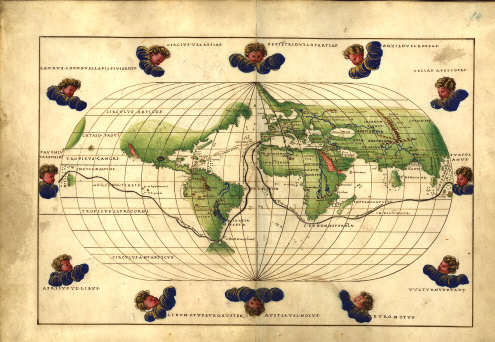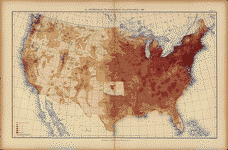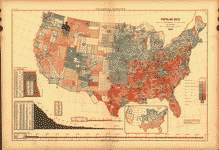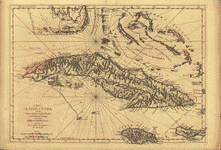|
|
Between 1536 and 1564 an enterprising Genoese chartmaker, Battista Agnese, produced in Venice a number of remarkably accurate and beautifully decorated nautical or “portolan” atlases on vellum for merchant princes and ranking officials. A version of this oval world map appeared in each of the seventy-one such atlases that have survived.
This CD contains the entire Agnese Atlas (14 maps) in MrSid format. This format allows you to see the entire map or drill down for the smallest details. If you printed one of these maps at full size, it would be about 36″x36″ (way more than can fit on a computer screen) so you can imagine how much detail they all have. (MrSID software is included on the CD.)
Agnese liked to show new discoveries and explorations of his maps, and this one includes the route that Magellan took around the world, inscribed in pure silver that later tarnished. He also traced, in pure gold, the route from Cadiz, Spain, to Peru, with overland portage across the Isthmus of Panama. This was the route of the treasure ships — heavily armed galleons that carried vast amounts of silver from Peru to Spain.
On the Agnese map continents are in yellow and green watercolors, mountains in brown, white, and silver, rivers (including the legendary sources on the Nile) in blue, and the Red Sea and Gulf of California in red. (In 1539 the explorer Francisco de Ulloa, noting that the water in the Gulf of California had a reddish tint, named it the Vermilion Sea to distinguish it form the Red Sea.)
 In the blue-and-gold clouds surrounding the oval world are cherubs, or wind heads, representing the classical twelve-point winds from which modern compass directions evolved. The symbolic treatment of winds first occurred in world maps of the tenth century on which the windblowers are portrayed as human figures seated on Aeolus bags. With one hand they hold trumpets or horns, and with the other they squeeze the wind out of the bags. This symbolism was at least as old as Homer, who wrote of Aeolus, the son of Hippotes, god and father of the winds and ruler of the island of Aeolia. Figures of old men, cherubs, or angels as windblowers, with or without Aeolus bags, were popular illustrations on maps up to the eighteenth century. In some cases the facial expression and size of the blast emerging from the mouth told a great deal about the wind, without further explanation.
In the blue-and-gold clouds surrounding the oval world are cherubs, or wind heads, representing the classical twelve-point winds from which modern compass directions evolved. The symbolic treatment of winds first occurred in world maps of the tenth century on which the windblowers are portrayed as human figures seated on Aeolus bags. With one hand they hold trumpets or horns, and with the other they squeeze the wind out of the bags. This symbolism was at least as old as Homer, who wrote of Aeolus, the son of Hippotes, god and father of the winds and ruler of the island of Aeolia. Figures of old men, cherubs, or angels as windblowers, with or without Aeolus bags, were popular illustrations on maps up to the eighteenth century. In some cases the facial expression and size of the blast emerging from the mouth told a great deal about the wind, without further explanation.






